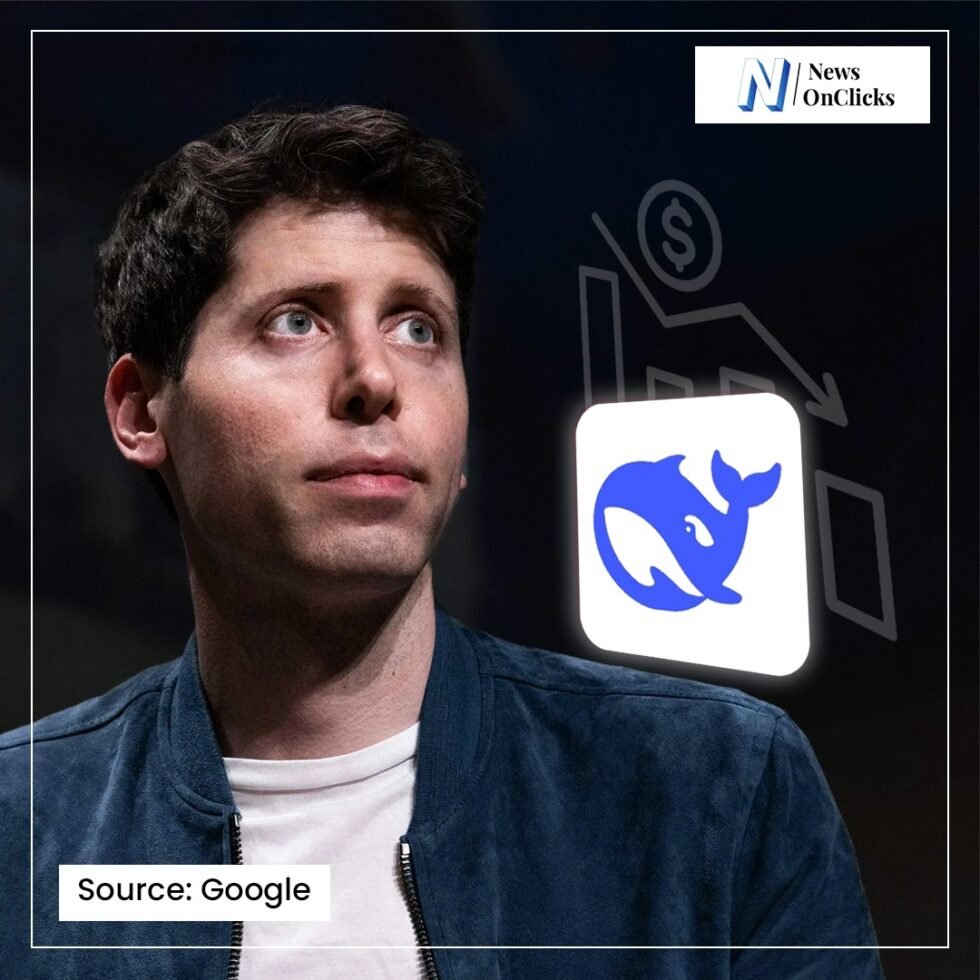
Artificial Intelligence (AI) has become the battleground for some of the world’s most powerful tech giants. One of the latest controversies in this space revolves around skepticism of OpenAI CEO Sam Altman about DeepSeek’s claim of training its AI model at a remarkably low cost of just $6 million. This article explores the details of this dispute, analyzing the feasibility of DeepSeek’s claim and its implications for the future of AI development.
The DeepSeek Cost Controversy
DeepSeek’s Initial Claim
DeepSeek, a Chinese AI startup, made waves by announcing that it had trained its R1 model for just $6 million using 2,048 GPUs. This claim, if true, would have marked a major breakthrough in reducing AI training costs, posing a direct challenge to industry leaders like OpenAI and Google DeepMind.
Sam Altman’s Response
In an interview, Sam Altman expressed strong skepticism about the figures presented by DeepSeek. When asked about his reaction, he humorously responded, “I was extremely skeptical of the cost number. It was like, there are some zeros missing.”
His statement hints at a much higher real cost, suggesting that DeepSeek’s reported numbers might have omitted significant investments in infrastructure, research, and additional hardware.
Investigating the Real Cost of DeepSeek’s AI Development
Semi-Analysis Report Findings
While DeepSeek initially maintained its claim of cost-effectiveness, a report by SemiAnalysis revealed a different picture. According to their findings:
- DeepSeek’s actual AI training cost was closer to $1.6 billion.
- The company had access to a fleet of 50,000 Nvidia Hopper GPUs, far exceeding the reported 2,048 GPUs.
- The $6 million figure likely referred only to a fraction of the training phase, excluding the extensive research and pre-training phases.
Why AI Training Costs Are So High?
Developing an AI model requires significant computational resources, skilled personnel, and infrastructure. The real costs typically include:
- Hardware Costs – High-performance GPUs like Nvidia’s H100 are expensive, with a single unit costing over $30,000.
- Data Acquisition – AI models require vast amounts of high-quality training data, which often involves licensing fees.
- Energy Consumption – Running thousands of GPUs for months generates enormous electricity costs.
- Engineering and Research – AI model development involves a team of highly paid experts in machine learning, software engineering, and data science.
Given these factors, DeepSeek’s reported budget seemed too low to be realistic.
The Implications of This Debate on AI’s Future
1. Transparency in AI Development
This controversy highlights the need for greater transparency in AI cost reporting. As AI competition intensifies, companies may attempt to downplay expenses to appear more efficient than their rivals.
2. China’s Growing AI Capabilities
Despite the cost discrepancy, DeepSeek’s rapid progress underscores China’s increasing presence in the AI race. With heavy investments from both private firms and government initiatives, Chinese AI startups are emerging as strong competitors to Western AI giants.
3. OpenAI’s Competitive Response
Altman’s response indicates that OpenAI remains focused on building even better models. With companies like DeepSeek pushing the boundaries, AI development is expected to accelerate further, leading to even more sophisticated models.
4. Cost Reduction Strategies for AI Training
While DeepSeek’s claim may not have been entirely accurate, reducing AI training costs remains a crucial goal. Companies are exploring:
- More efficient model architectures to reduce computational needs.
- Cloud-based AI training to leverage shared resources.
- Specialized AI chips optimized for specific workloads.
How This Controversy Affects AI Adoption?
With AI playing an increasing role in business and society, transparency about development costs, ethical AI practices, and model performance is becoming more important. The DeepSeek controversy raises questions about how AI startups communicate their advancements.
Will AI Become More Affordable?
One of the key takeaways from this debate is the need for cost-effective AI models. While training costs remain high, advancements in technology may gradually bring down expenses, making AI more accessible for businesses and researchers.
Conclusion
Sam Altman’s skepticism regarding DeepSeek’s training cost claim reflects a broader issue in the AI industry—transparency and trust. While DeepSeek’s model remains an impressive achievement, the real cost of AI training continues to be a critical factor in shaping the industry’s future. As AI competition heats up, companies must balance innovation with credibility to maintain their leadership positions in this ever-evolving space.
Key Takeaways:
- DeepSeek’s claim of training an AI model for $6 million has been disputed, with actual costs estimated at $1.6 billion.
- Sam Altman dismissed the claim, suggesting major discrepancies in the reported cost.
- AI development remains highly expensive, requiring massive computational resources.
- Transparency and competition are driving the next phase of AI innovation.
With AI advancing at an unprecedented pace, staying informed about these developments is crucial for businesses, researchers, and tech enthusiasts. As OpenAI, DeepSeek, and other AI giants continue their race, one thing is clear—AI is here to stay, and its evolution will reshape the future of technology.









